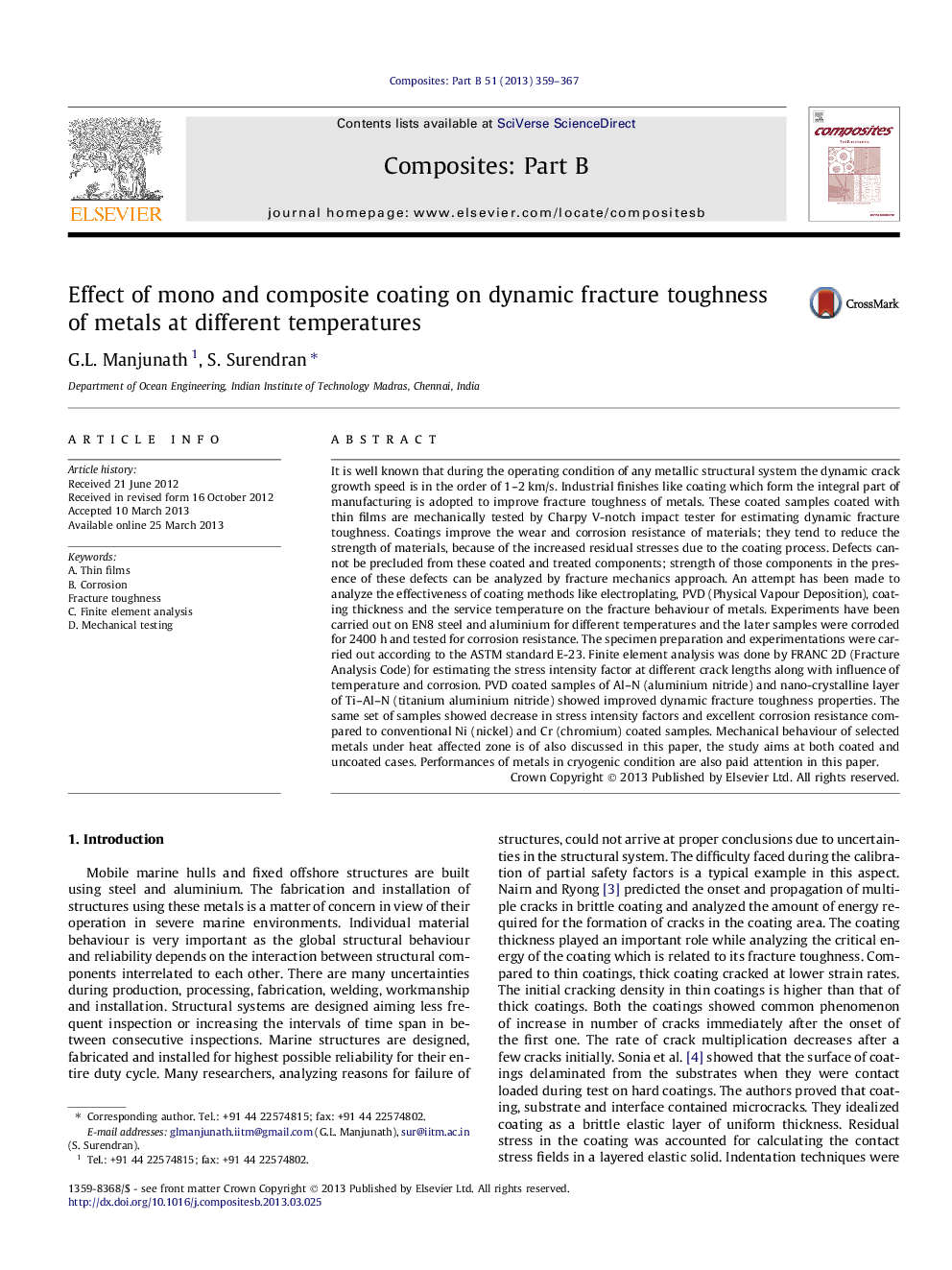| Article ID | Journal | Published Year | Pages | File Type |
|---|---|---|---|---|
| 818248 | Composites Part B: Engineering | 2013 | 9 Pages |
Abstract
It is well known that during the operating condition of any metallic structural system the dynamic crack growth speed is in the order of 1-2Â km/s. Industrial finishes like coating which form the integral part of manufacturing is adopted to improve fracture toughness of metals. These coated samples coated with thin films are mechanically tested by Charpy V-notch impact tester for estimating dynamic fracture toughness. Coatings improve the wear and corrosion resistance of materials; they tend to reduce the strength of materials, because of the increased residual stresses due to the coating process. Defects cannot be precluded from these coated and treated components; strength of those components in the presence of these defects can be analyzed by fracture mechanics approach. An attempt has been made to analyze the effectiveness of coating methods like electroplating, PVD (Physical Vapour Deposition), coating thickness and the service temperature on the fracture behaviour of metals. Experiments have been carried out on EN8 steel and aluminium for different temperatures and the later samples were corroded for 2400Â h and tested for corrosion resistance. The specimen preparation and experimentations were carried out according to the ASTM standard E-23. Finite element analysis was done by FRANC 2D (Fracture Analysis Code) for estimating the stress intensity factor at different crack lengths along with influence of temperature and corrosion. PVD coated samples of Al-N (aluminium nitride) and nano-crystalline layer of Ti-Al-N (titanium aluminium nitride) showed improved dynamic fracture toughness properties. The same set of samples showed decrease in stress intensity factors and excellent corrosion resistance compared to conventional Ni (nickel) and Cr (chromium) coated samples. Mechanical behaviour of selected metals under heat affected zone is of also discussed in this paper, the study aims at both coated and uncoated cases. Performances of metals in cryogenic condition are also paid attention in this paper.
Related Topics
Physical Sciences and Engineering
Engineering
Engineering (General)
Authors
G.L. Manjunath, S. Surendran,
